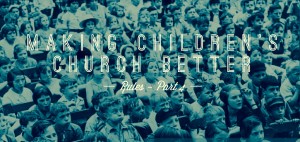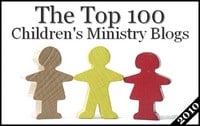
Don’t Correct From the Stage
This is critical for me as I don’t want to break the intensity of whatever I’m doing. I always allow other leaders who are not teaching to make a correction with a disruptive child. There are, however, some techniques I’ve used from the stage that help if I sense a disturbance in the force. These are just great teaching techniques in general and you may see them repeated as we get into the actual presentation part of making children’s church better:
Direct Look
Sudden Pause
“Music is the space between the notes” – Claude Debussy. Sometimes, I will suddenly stop talking and freeze my body movement – like I’m taking a long pause. Every child will turn their attention to me and become very quiet themselves. Silence is just as important as the noise of me talking.
Telling Secrets
“Do you want to know a secret?” – The Beatles. Everyone wants to hear a secret. Suddenly speaking in a whisper can gain the attention of everyone in the room. Why? Because they all want to hear what you are saying. Especially if you stop what you’re saying, look both ways as if you’re being cautious about who hears you, then begin whispering.
Use Their Name
“… You just call my name…” – James Taylor. Kids love to hear their name (when they’re not in trouble). I will use the child’s name in the story or lesson I’m teaching. For example: let’s say I’m telling a story and the child’s name is, Connor. “…It was time for school and Sally didn’t know what to tell her teacher. As Sally was on her way to school wondering what to do, she bumped into her friend, Connor. And she so badly wanted to ask Connor what he thought. But, she was too embarrassed…” Now Connor, who might be talking to his friend, has stopped to find out what’s going to happen with a boy having the same name…
—OR—
Let’s say I’m teaching an object lesson. I display a hammer and nails and some wood. “Have any one ever seen any of these things. Has anyone ever used one of these tools? Hey Connor, have you ever used a hammer before? How about you Owen? You have?” Again, I’m trying to engage Connor by using his name. Sometime, I’ll just say something like, “Connor knows what I’m talking about – right Connor… you and I know about this kind of stuff, don’t we?” I’ll say it in a fun positive way as if Conner has some special insight or inside track with me.
Get Close
“Just like me, they long to be, close to you…” — The Carpenters. Creating a presence near the child or children is effective. If ever you want an individual or a small group of children that are being disruptive to give you their attention, stand near them. Sometimes I walk around the rows of kids while teaching just so I can get close to the children who are starting be disruptive.
Abrupt Changes
“Ch, ch, ch, changes…” David Bowe. Change in some noticeable way. Yes, the sudden stop, the whisper can work… but so does any abrupt volume change or pace of speaking. A combo of both is great! Try different voices (make sure it’s appropriate for your moment of teaching).
Get Them Standing
“The mind can absorb no more than the seat can endure” — Donal Blaney. You need to discern if your group has been sitting too long. If it’s obvious that the reason the children are squirming, talking and being disruptive, is that they have been seated too long… I find a reason for them to stand and do something. Sometimes, I just have them stand and repeat something back to me. Maybe in a silly voice or as fast as they can. Then it’s boys vs. girls. Then it’s kids vs. leaders.
As I stated earlier; these techniques are great teaching techniques in general. That’s it for rules. Next time we will focus on other areas of Children’s Church.


